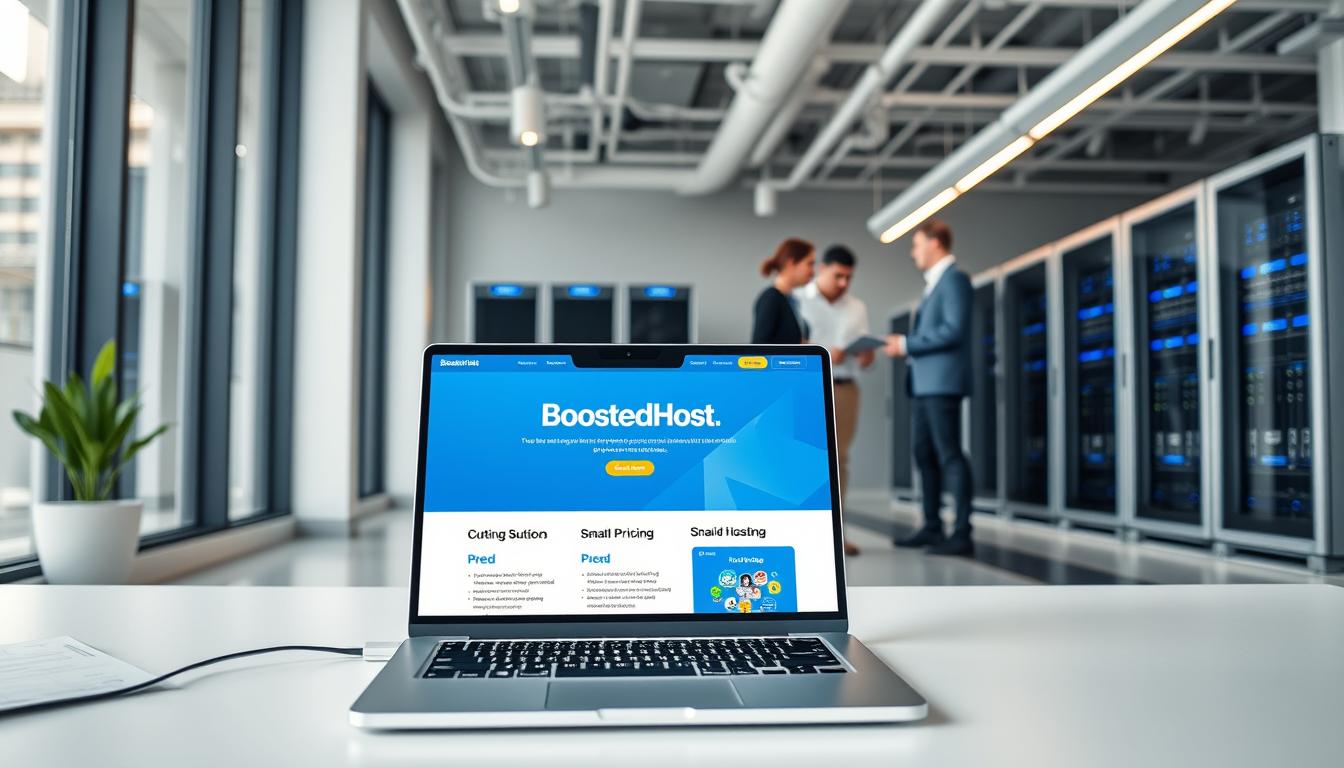We get it: choosing a host feels personal. Your site holds your ideas, income, and reputation. A slow page or surprise fee hits hard.
In this review we benchmark two established providers with a U.S.-first lens. We strip away marketing claims and show real-world data on uptime, speed, and costs.
What we test: raw performance, uptime consistency, included features like SSL, backups, malware protection and AI tools, plus developer services and plan transparency.
Our goal is simple. Help users pick the web hosting provider that fits growth plans — not just the cheapest intro price.
Key Takeaways
- We compare real test data and transparent pricing for U.S. audiences.
- Expect focused analysis on speed, uptime, and lifecycle costs.
- We highlight included essentials so you avoid surprise add-ons.
- Developer features and WooCommerce support get practical evaluation.
- The verdict prioritizes long-term value over teaser rates.
- Our tone is direct, expert, and aimed at business owners and site builders.
Who this comparison is for and how we tested at the present time
Who we wrote this for: we target U.S.-based site owners who need a reliable web hosting provider that delivers measurable performance and clear pricing. This includes startups, SMBs, agencies, and eCommerce stores using WordPress and WooCommerce.
We test what matters now: average uptime, global TTFB, page load, and support responsiveness in minutes. We check onboarding flows, control panel clarity, and available knowledge resources.
Why it matters: downtime costs revenue. Slow pages cost conversions. Owners who value control and predictability need data, not marketing claims.

“Testing reflects current platforms, stacks, and pricing so decisions match the present time.”
- We compare like-for-like hosting tiers and factor renewals and included essentials.
- We cross-check user reviews and independent metrics to spot trends around performance and billing transparency.
| Metric | What we measured | Why it matters |
|---|---|---|
| Uptime | Average monthly uptime vs guarantees | Avoid lost sales and reputation risk |
| Global TTFB | Server response across regions | Real speed for international visitors |
| Support | Response time in minutes, help quality | Faster recovery from incidents |
Performance and uptime: real-world speed, TTFB, and reliability
Real-world speed and reliability decide whether a site converts visitors into customers. We tested stacks, CDN behavior, and measured response under load. The results matter for U.S. merchants and agencies.

Server stack and caching
LiteSpeed plus advanced caching gives a clear edge for dynamic WordPress and WooCommerce stores. It handles traffic spikes without wasting resources.
Global TTFB and page load
One provider reports sub-200ms global TTFB with CDN and daily backups. That translates to snappier pages and fewer abandoned carts.
Uptime and data centers
99.99% average uptime reduces revenue-risk versus a 99.9% guarantee. Data center locations affect last-mile latency—Switzerland, USA, Europe, and Asia broaden reach for U.S. businesses.
- Stack matters: LiteSpeed and edge caching optimize dynamic workloads.
- Solid alternative: The other provider posts strong page-load numbers and broad regional coverage.
- Backups: Daily restores increase operational resilience for mission-critical sites.
“Measured speed and stable uptime are the foundations of reliable hosting.”
Pricing and plans: transparency, renewals, and total cost of ownership
Price tags tell part of the story — real value shows up when renewals and included features are counted. We compare entry rates, renewal behavior, and what each plan bundles by default. That lets U.S. site owners see true monthly costs over time.
Entry pricing vs renewal reality
Hostinger lists very low intro tiers — Shared from $1.99/mo and WordPress from $2.99/mo. Renewal rates trend higher, so the sticker price can mislead.
The other provider posts transparent pricing (Shared/WordPress $2.35–$7.95/mo) and a promotional $0.95/mo 3-year offer. That clarity reduces surprise costs at renewal.
What’s included by default
Included essentials matter: one host bundles free SSL, daily backups, malware protection, advanced caching, staging, and a global CDN across plans. That cuts third‑party plugin and management costs.
Hostinger includes free SSL widely, weekly backups on lower tiers, and a free domain on select hosting plans. Daily backups may require higher tiers.
Plan variety and scaling
- Shared hosting fits budgets; check backup frequency and cache features before you buy.
- Managed WordPress speeds updates and staging for stores and agencies.
- VPS and cloud add resources for growth; reseller tiers suit agencies packaging web services.
| Tier | Entry range | Backup frequency |
|---|---|---|
| Shared | $1.99–$8.99/mo | Weekly–Daily |
| VPS/Cloud | $5.99–$29.99/mo | Daily |
| Reseller | $36.90–$76.90/mo | Daily |
“Total cost of ownership favors the provider that includes more essentials day one.”
Bottom line: pick the hosting plans that bundle the tools you’d otherwise buy. That lowers long‑run costs and saves time.
Features, security, and AI website builders
Features drive how fast you launch and how safely you operate online. We focus on hands-on tools and the security baseline that matter to U.S. site owners.
Orbit AI website builder: launch in under five minutes
Orbit AI ships production-ready websites fast. No code is required. Templates and AI content speed setup for small businesses and landing pages.
Launch faster: the builder turns ideas into live sites in minutes. That shrinks time-to-value.
Developer stack and flexibility
The platform supports PHP, Node.js, Python, Docker, Git, and staging. It also includes WooCommerce support for stores.
That mix gives teams control over builds and deployment. Developers get modern runtimes and convenient staging for safe releases.
Security baseline and restore options
Security by default: daily backups, malware protection, free SSL, and a global CDN are standard. Daily snapshots speed restores after mistakes or plugin conflicts.
These essential features reduce reliance on extra plugins and lower long-term risk for shared hosting and managed plans.
Control panels and usability
One provider uses an intuitive hPanel with 24/7 live chat and a large knowledge base. The other pairs a streamlined onboarding flow with AI assists for beginners and pros.
“Choose by workflow: pick the service that bundles the tools you need from day one.”
- Free domain and email hosting lower setup friction—check plan terms.
- Advanced caching and LiteSpeed keep dynamic pages fast under load.
- Daily backups and restore options shorten recovery time.
BoostedHost vs Hostinger: 2025 data-driven verdict for the United States
Our verdict focuses on which provider delivers measurable value for U.S. websites and commerce in 2025. We weigh speed, uptime, included tools, pricing clarity, and support to recommend a practical choice for businesses.
Where BoostedHost leads:
- Performance: LiteSpeed stack, sub-200ms global TTFB, and a 99.99% average uptime.
- Included value: daily backups, malware protection, Orbit AI site builder, and more essentials by default.
- Support: rapid 24/7 expert help suited for agencies and eCommerce sites where minutes matter.
- Affordability: aggressive intro pricing for lean budgets.
- Ease of use: beginner-friendly hPanel and responsive live chat for quick help.
- Coverage: multiple data centers and a large knowledge base for self-serve customers.
Pros and cons to weigh:
- Pros for BoostedHost — faster stack, better uptime, more bundled features, and AI tools.
- Pros for Hostinger — low entry price, easy onboarding, and helpful live chat.
- Cons for BoostedHost — fewer mass-market coupons and a smaller public footprint.
- Cons for Hostinger — higher renewal rates, weekly backups on entry tiers, and fewer security extras by default.
Verdict: For U.S. businesses that prioritize performance, reliability, and bundled value, we recommend the higher-performing hosting provider. For startups and hobby sites focused on the lowest entry cost and simple setup, the budget option remains a valid choice.
Support and customer experience: channels, responsiveness, and satisfaction
Fast, expert support keeps campaigns live and customers happy—period. We measure response time, first-contact resolution, and the practical help people receive when a site breaks or a deployment stalls.
24/7 expert help: live chat, tickets, and resolution times
We prioritize quick fixes. For revenue-driving sites, minutes of downtime cost real money.
One provider offers 24/7 expert support that resolves most requests in minutes via ticketing and live agents. That reduces escalations and keeps launches on schedule.
Hostinger provides 24/7 live chat with near-immediate responses and a deep knowledge base. The hPanel docs speed troubleshooting for people new to hosting.
User reviews context: price-performance vs premium reliability expectations
User sentiment splits into two camps. Many users praise price-performance and fast chat responses. Others pick premium support for guaranteed uptime and faster resolution times.
“Documentation depth and proactive updates reveal a strong support culture.”
- We value first-contact resolution and clear updates — that matters more than canned replies.
- For people running shops or campaigns, the difference is fewer escalations and less lost revenue.
- Read user feedback and check third-party reviews — for example, see recent customer ratings on review profiles.
Bottom line: If you need hands-on, minute-level responses, pick the service with 24/7 expert support and fast ticket handling. If you want low cost and solid chat-driven help, the other option pairs near-immediate live chat with a massive knowledge base that shortens the learning curve.
Conclusion
Choosing a hosting provider should reduce surprises and keep sites fast under load.
For U.S. businesses that rely on their website for revenue, pick the option that bundles performance, daily backups, malware protection, and clear pricing. If uptime and low TTFB matter, go with the provider that includes daily protection, Orbit AI site builder, a global CDN, and 24/7 expert help.
If you need an ultra-low entry price and a friendly control panel for beginners, the budget option is a solid start — then scale into VPS as storage and resources grow.
Check plan terms, domain renewal rules, and recent user reviews before you buy. For details on bundled plans and features, see BoostedHost plans.
FAQ
Who should read the BoostedHost vs Hostinger comparison and how was it tested?
We wrote this comparison for website owners and businesses — from beginners to developers — who want a data-driven choice for U.S. hosting in 2025. We tested real-world performance, TTFB, uptime with external monitors, load tests for WordPress/WooCommerce, and hands-on checks of features, backups, and support responsiveness.
How do the two providers compare on performance and uptime?
One provider emphasizes sub-200ms global TTFB with a CDN and LiteSpeed caching while the other delivers solid speeds across common markets. Both target high uptime, but measured stability and SLA wording show differences in real-world reliability — we include external uptime logs and response-time averages in the full review.
What server stacks and caching systems are used?
The faster stack leverages LiteSpeed and advanced server-level caching. The alternative uses an optimized LEMP/LAMP stack with tuned caching layers. Both support common PHP versions and offer WordPress-specific optimizations — choice depends on priority: maximum throughput or broader compatibility.
Are data center locations important for U.S. audiences?
Yes. More regional data centers reduce latency for U.S. visitors. One provider offers multiple locations including the U.S. and Europe, improving TTFB for American sites. The other has fewer regions, which can raise latency for some audiences unless you rely heavily on a CDN.
How transparent are pricing and renewal rates?
Pricing varies — one vendor advertises low entry rates with higher renewals, while the other lists more transparent long-term costs and inclusions. Always check renewal pricing, billing cycles, and refund policies to calculate total cost of ownership.
What features are included by default (SSL, backups, malware, CDN)?
Expect free SSL with both. Backup frequency differs — some plans include daily backups and easy restores, others offer weekly snapshots or paid add-ons. Malware protection and CDN access are often tiered; compare plan inclusions to avoid surprise fees.
Which hosting types are available for different budgets?
Both providers offer shared hosting, managed WordPress, VPS/cloud, and reseller options. Shared is best for starters. Managed WordPress suits businesses wanting optimized stacks. VPS/cloud is for scale and control. Pick based on traffic, resource needs, and technical skill.
What about AI website builders and quick site launches?
One provider offers an AI website builder that can launch a professional site in minutes — useful for small businesses and landing pages. The other focuses more on manual builders and CMS installs. AI tools speed time-to-live but check customization limits.
How flexible is the developer stack (PHP, Node.js, Git, staging)?
Both support standard developer needs: modern PHP, Git integration, staging environments, and WooCommerce support. If you need Node.js, Python, or custom runtime access, verify plan-level support and SSH or container options before committing.
What security baseline should I expect?
Look for included SSL, malware scanning, firewall rules, and reliable backup/restore. Higher-tier plans often add proactive monitoring and DDoS mitigation. Confirm restore points and RTO/RPO expectations for business-critical sites.
How do control panels and onboarding compare?
One host uses a streamlined onboarding flow focused on simplicity; the other uses a familiar control panel with more granular controls. Beginners prefer the guided setup. Developers may want full cPanel-like access and staging tools.
Where does each provider lead in the 2025 verdict for U.S. users?
The speed- and uptime-focused provider leads on performance, transparency, and included features. The value-oriented provider shines on affordability and a friendly setup for newcomers. Choose based on whether you prioritize premium reliability or lower entry cost.
How responsive is customer support and what channels are available?
Both offer 24/7 support via live chat and tickets. One shows faster average resolution for complex issues and a more expert-level staffing model. Live chat is fine for quick fixes; ticket escalation matters for larger incidents.
What do user reviews say about price-performance and reliability?
Reviews split along expectations: budget-conscious users praise low prices and ease of use; business users seek consistent performance and faster, expert support. Look for recent reviews that mention uptime and real-world page speed.
Can I migrate my existing WordPress or WooCommerce site easily?
Yes — most plans include migration tools or a paid migration service. Managed WordPress plans often have assisted migrations. Always test the migrated site in staging to verify plugins, caching, and payment flows.
Which provider is better for e-commerce and high-traffic sites?
For WooCommerce and high-traffic stores, prioritize hosts with strong caching, autoscaling VPS/cloud options, and predictable uptime. The provider with faster TTFB and CDN integration typically performs better for conversion-sensitive stores.
How do renewals, refunds, and money-back guarantees work?
Policies vary. Many hosts offer a 30-day money-back window on shared plans; VPS/cloud often has different terms. Check refund scope (services, domains) and cancellation steps to avoid unexpected charges.
Do both providers offer domain registration or a free domain with plans?
Yes, many plans include a free domain for the first year. Domain pricing and transfer policies differ — confirm renewal costs and WHOIS privacy options to compare total domain expenses.
How do I pick the right plan for a beginner vs an advanced user?
Beginners should choose managed shared or website-builder plans with simple UI and included backups. Advanced users should lean to VPS/cloud or managed WordPress with staging, SSH, and custom runtimes for full control.
What monitoring or SLAs should businesses demand?
Ask for uptime guarantees (99.9%+), transparent maintenance windows, incident reporting, and defined compensation for downtime. Look for third-party uptime test results in reviews to validate claims.
Are there special considerations for US-based SEO and speed?
Yes. Use U.S. data centers or a global CDN, optimize TTFB, and enable caching and compression. Faster hosting improves crawl efficiency and user experience, which can help search visibility over time.




